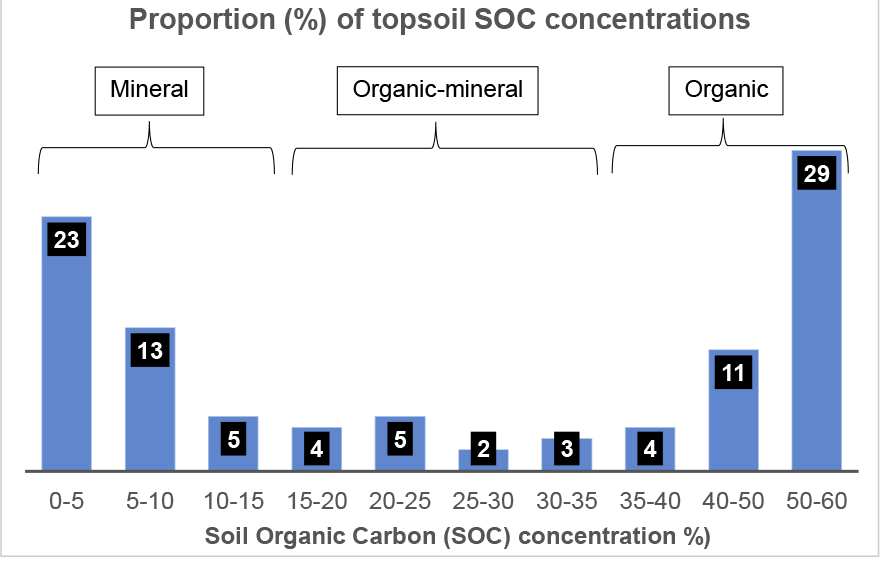Soil organic carbon sequestration: scoping study
A report evaluating the ability of existing datasets to answer questions regarding the status of organic carbon in Scottish soils.
3 Terminology used to describe soil organic carbon
Perhaps the simplest measure of soil organic carbon (SOC) or soil organic matter (SOM), is the concentration of carbon in the soil, normally expressed as a percentage (%) or g/kg soil. SOC is most often measured using a dry combustion technique where a soil sample is oxidised at high temperatures and the amount of CO2 given off it measured. If the soils contain carbonates (eg from limestones or chalks) they are pre-washed in acid to remove this inorganic carbon prior to analysis. The SOC measurement can be converted to SOM using the van Bemmelen factor (1.724) which was proposed in the 1890s and assumes that SOC comprises around 58% of SOM.
SOC is variously reported as percentage SOC, percentage SOM or Loss on Ignition (LoI) though these values are not necessarily interchangeable. Factors such as the furnace temperature can affect measured LoI, and the amounts of other elements (for example, nitrogen, phosphorous, potassium and calcium) within SOM can affect the accuracy of the conversion between SOC and SOM. More recently spectral methods, based on the absorbance patterns of Infra-Red radiation in a soil, have been used to quantify SOC concentrations.
Data shows that SOC concentration of most of Scottish topsoils varies between about 2% and 60% with most mineral topsoils having concentrations <10 % and most organic (peaty) soils having SOC concentrations > 40%. Plotting the frequency of SOC concentrations in surface soil layers using data from the first National Soil Inventory of Scotland (NSIS 1978-88) shows two distinct peaks, one at the lower and one at the higher concentrations. In general, it is useful to consider mineral topsoils as having SOC concentrations <15% and peaty (organic) topsoils as having SOC concentrations >35%. Soils with SOC concentrations between 15 and 35% (organic-mineral) are relatively rare (Figure 1). Note that the mid-range of SOC concentration (organic-mineral) should not be confused with the similar organo-mineral soils which have a peaty layer <50 cm overlying mineral material.
While SOC concentration is a useful indicator, SOC stock (or quantity) is generally considered to be a more robust measurement of SOC as it takes into account the density of the soil and the thickness of the soil layers as well as concentration. This is important as both density and thickness can change through normal cultivation, for example, if heavy machinery is used.
A key example of the importance of measuring stocks comes from the National Soil Inventory of Scotland (2007-9) resampling (Chapman et al, 2013). When SOC concentrations of cultivated soils were compared to the NSIS 1978-88 samples, the concentrations of the topsoils were shown to have declined. However, it was also noticed that the thickness of the topsoils in mineral soils had significantly increased between the two samplings (possibly due to deeper ploughing) leading to no overall change in SOC stocks. In most organic soils, the SOC concentration will only vary slightly as the soils are almost 100% SOM and so change is only really detectable through measuring SOC stock and where changes in the thickness of the layers, for example, by increases from dead plant material or losses through drying and oxidation, are a crucial to the calculation.

Contact
There is a problem
Thanks for your feedback